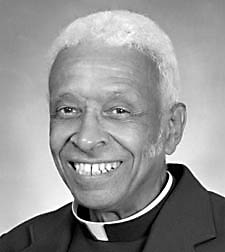
Father Jerome LeDoux, SVD
Reflections on Life
By Father Jerome LeDoux, SVD,
A June 15, 2018 email from Art Magaldi ignited the following discussion.
Fr. L.,
Just read the two articles and the second one reminds me of a point I discussed with a couple of priests recently. It’s a small point, but it’s interesting to me. The question is whether the just will actually see the face of God. One of the two priests said that God was spirit and therefore there really wasn’t a face to see. I have a problem with that interpretation because the Scriptures mention seeing the face of God, e.g., I believe the psalmist asks, “When will I see the face of God?” I think Jesus is also quoted as saying that the Guardian Angels of little children look on the face of his Father in heaven (not sure of this exact wording, however). Non-scripturally, Dante in his “Divine Comedy” says that the greatest happiness of those who make it to heaven is to look on the face of God and see the great love God radiates for people. I’m quite sure you will know many more of the liturgical and scriptural references to God’s face.
So, although it’s a small point, what do you think about this? Maybe this would even fit in some small sense with Sister Dianne’s discussion of our gut feelings about who God is. Art
“Theologically,” I responded, “there is no doubt that God has no face, for God, as the angels, is a pure spirit with no physical parts attached. What we read in the Scriptures about God’s face indicates the intended readership of the Bible, most of whom had nothing beyond a few grades’ education, if even that. They would not have understood any cerebral presentation of God.
“For the same reason, the Bible, especially the Old Testament, is written in an anthropomorphic way; meaning that God is described in human form and feelings. The readers knew nothing else. Imagine the untaught fishermen of the Old and New Testaments trying to wrestle with theological concepts such as Saint Augustine and Saint Thomas Aquinas offered us. Even with our supposed education, we wrestle.
“Interestingly, the Baltimore catechism states that God cannot be seen with bodily eyes. Will we have spiritual eyes? This implies that, somehow, we will know
God fully in a non-physical, spiritual way. We don’t grasp that either. Frankly, I’ll be more than content just to make it into heaven. God bless you, JL”
With all our so-called sophistication, we are little different from the people of the Old Testament who embraced all the anthropomorphic depictions of God.
One big confirmation of what Art is talking about is the huge attraction of so many folks to cloud formations that spur our imagination into seeing the face of God or Jesus or the angels in the sky. Several decades ago, I saw two rather sharp photos of cloud formations that made good depictions of the God of our imagination. There are also sunrise and sunset shots that fire our religious sensibilities. These are the same kind of phenomena that so inspired many of the Old Testament Psalms. This has birthed a singular YouTube genre featuring cloud formations and Godly texts.
God dreams are another great fascination that we humans experience. I have had only one God dream, and that occurred over sixty years ago. First, understand that I have been close to bees all my adult life. I even took care of six beehives in college in Epworth, Iowa. In the dream, I was walking among beehives when I came upon a pre-teen child. The bees were restless, almost threatening, around me. But, as the child approached them, they bumped gently into the forehead and face of the child with kisses and caresses. Sporting hazel eyes that seemed to be staring into eternity, the child said softly, “Before Abraham came to be, I am.” It was the only God
dream I ever had, but it was a doozy, making a profound impression on me.
When we meditate or contemplate, we struggle valiantly with various kinds of imagery, straining to accommodate ourselves to some image or sculpture. Thus, masters of the brush and chisel created masterpieces of art, such as Leonardo da Vinci’s Last Supper of Jesus and his apostles, Michelangelo’s rendering of creation or the Last Judgment, Michelangelo’s sculpture of the Pietà or Moses or David, and countless other magnificent pieces that hold us in meditation and awe. Unbeknown even to themselves, scarce religious people are thereby swept up into meditation.
All the above and numerous other people and things in our lives comprise our anthropomorphic connections with God that, say what we may, are our best means of communing with the Almighty. One obvious stab at communing with God are the scores of movies made about God and our human-divine relationships.
“God is love, and all who abide in love abide in God and God in them.” (1 John 4:16)
(Father Jerome LeDoux, SVD, has written “Reflections on Life since 1969.)
